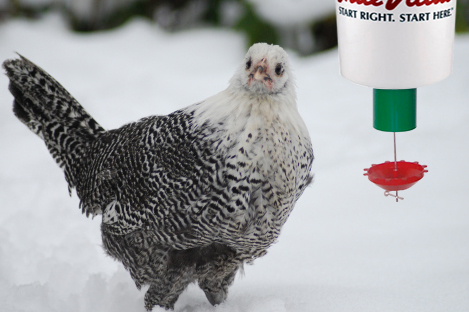
The Campine is a breed of domestic chicken, named for the Campine region of north-eastern Belgium and south-eastern Netherlands. It is called the Kempisch Hoen in Belgium. The Campine was originally a smaller type of the Braekel, weighing up to 1.2 kg less. In 1884, it was decided that the two types should be differentiated. The Campine became a separate breed with its own breed standard in 1904. Campines were exported from Britain to the United States. The Campines was added to the Standard of Perfection of the American Poultry Association in 1914.
The Campine seen these days is a mix of two Belgium Varieties with the plumage of the Campine male and female being identical in color patterns. The sexes are identical in color pattern and sometimes the males are hen-feathered. Campines are closely feathered with prominent black barring beginning at the bottom of the neck. They have a large red single comb that flops to one side and prominent dark eyes. The legs of a Campine are dark blue.
The PECk-O-MATIC Automatic Chicken Feeder works on a ‘feed on demand’ basis, which releases small quantities of grain/pellets at a time. Studies have proven that it relieves boredom and stops feather plucking. If feeding corn, the 1-inch regulator disc can be used. When feeding cracked corn or peas, it is recommended to use PECk-O-MATIC Automatic Chicken Feeder's ½-inch regulator disc to feed these chickens. Chickens require good nutritionally to live long, healthy lives, while producing nutritious eggs.
Silver Campine and Golden Campine are the two APA recognized color varieties of Campines. The Silver Campine has a pure white head and neck hackles while the rest of this chicken is barred with beetle-green on a pure white ground. The Golden Campine has the same pattern, but the head, neck hackles and body ground color is rich gold rather than white. Their necks are a striking burnt orange hue. They are bred more for ornamental purposes but they will lay a fair number of medium white shelled eggs.